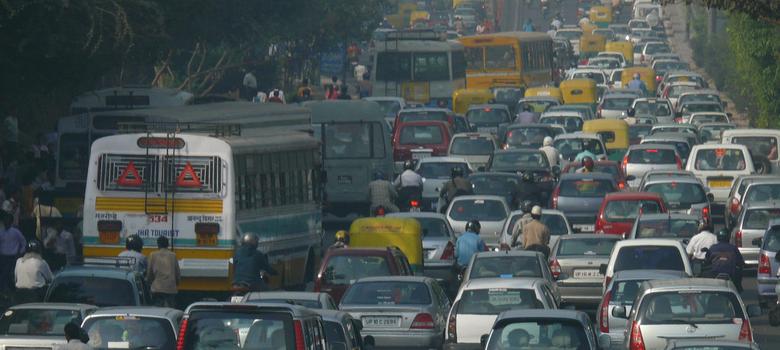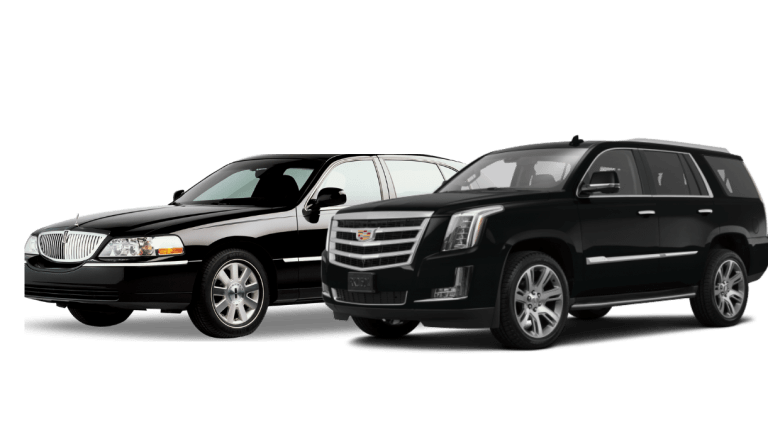
One of the biggest ironies surrounding the drastic restrictions on driving that have come into force for 15 days from New Year in Delhi is the disclosure that none other than Environment Minister Prakash Javadekar earlier this year diverted a Rs 20-lakh Toyota Fortuner SUV bought by the Steel Authority of India for his personal use.
Officially, the car was meant for the Environment Ministry’s officials to inspect steel mines. But the official clearance that the ministry gave at the same time to SAIL for clearing forests for its Barsua iron ore mines in Odisha was surely too much of a coincidence.
Such is the elite’s obsession with cars – the bigger the better – that even the Environment Minister has fallen prey to it. Already, doubts have been raised about the odd and even number plate restrictions that will come into effect from Friday, January 1.
Many of the urban rich already own more than one car, the argument runs, so this daily ban won’t have much impact. Actually, the number of families who own more than one car can’t be all that many in absolute terms and, even if they do, the ban still reduces the overall number on the roads. As it is, only a fifth of Delhi households owns a car.
The experiment will actually be used to study how drivers react: how many switch to the Metro, which has been known to carry a maximum of over 3 million passengers one day this August, and how many take buses.
Mexican takeaway
Sceptics are also pointing out that the rich will simply buy another new or second-hand car. This can be countered, if the experiment is to be extended, by doubling the one-time tax for a second car and trebling it for a third.
Those who have questioned the efficacy of the number plate restrictions have pointed out to the alleged failure of Mexico City’s scheme instituted in 1989, known as Hoy No Circula, to imply that your car doesn’t ply today.
The pollution levels didn’t decline, motorists didn’t switch sufficiently to public transport and the number of vehicles actually increased, with second-hand vehicles emitting more fumes.
This contention has been effectively countered by Melba Pria, Mexico’s Ambassador to India, who has pointed out that the scheme has been successfully tried out subsequently in Bogota, Sao Paulo, other Latin American cities and Beijing.
The air in the Chinese capital was rated the worst in the world till it was overtaken, according to the World Health Organisation, by New Delhi. As many as 13 out of the 20 worst polluted cities in the world are in India today.
As Pria notes, the number plate restriction is only part of a much bigger drive to reduce the use of cars. Other measures include stricter fitness norms, compulsory catalytic converters in all cars, and the promotion of public transport. All vehicles in Mexico must be inspected every six months.
Surveys found that two-thirds of citizens in Mexico City used public transport on the restricted days and less than 5% bought a new vehicle, while 4% carpooled.
Congestion charges
An even more effective way of restricting cars is by congestion charges. Singapore was the first to do this by introducing its electronic road pricing scheme, where cars are automatically docked when they enter the central business district.
London followed suit under its dynamic former Mayor Ken Livingstone. It started with £5 in 2003 and is now twice as much. This has led to a drastic fall in the number of cars entering the city centre. What is more, the revenue is directed towards improving public transport, unlike taxes on cars in this country.
Mumbai, with its north-south transport axis, is eminently suited for the introduction of congestion charges. However, the automobile lobby, aided and abetted by politicians and bureaucrats, will not give up its privileges. This is why Mumbaikars and others in Maharashtra are calling for an end to tolls on highways.
Car permits
Singapore also issues a limited number of permits to own a car. This is determined by market forces – demand has to be matched by supply, so that it automatically limits the number of cars owned in the city-state.
The cost of such a permit varies according to the model of a car and in some instances, can actually exceed the cost of a high-end model like a Mercedes or BMW.
Delhi has 157 cars per 1,000 people, as against Singapore’s 38 cars. Hong Kong is even better with 25.
Parking charges
By any reckoning, proper parking charges can serve as a very efficient method of curtailing the use of cars. In Mumbai, even with some of the highest prices of real estate in the world in certain areas, one can get away by paying Rs 10 or Rs 20 an hour, and at a flat rate.
If parking charges were made telescopic – which means they increase with each passing hour – it would automatically restrain motorists from plying their cars.
There are proposals to do this as well as charge night-time parking on streets, but these have been met with howls of protest from car owners, forcing the municipal corporations to back down.
Another way of ensuring the cars stay off the road is to insist that any new building complex has an underground or overground parking space on its premises, as is the practice in Bangkok.
In Mumbai, the authorities from time to time propose building underground car parks but these come with a high construction cost of Rs 30 lakh per slot, which would serve as yet another subsidy to motorists.
Carrot and stick
It goes without saying that as much as the stick, it is the carrot which will persuade owners to keep their cars in garages and use them only on week-ends and holidays. Public transport needs to be augmented, particularly last-mile connectivity to rail or Metro stations.
Motorists believe that this should precede curbs on private automobiles. But they forget that four- and two-wheelers in Delhi, for instance, occupy 80% of its road space. Once these are restricted, it automatically paves the way for faster mobility of buses.
Reserved bus lanes, known worldwide as the Bus Rapid Transit System or BRTS, have worked wonders in Curitiba, Brazil, Bogota, Istanbul and scores of cities all over the world.
However, in Delhi, the trial stretch had to run the gauntlet of vehement opposition from motorists and the media, and was virtually abandoned, as it was in Pune.
There is nothing inherently “Indian” that precludes our cities from such systems. It is working perfectly well in Ahmedabad and Indore.
To the criticism that roads in Indian cities are too congested for reserved lanes, the counter argument is that they are clogged by private vehicles. Remove them, and buses would work well.
The Delhi Transport Corporation or DTC can now carry only a maximum of four million passengers a day with 4,500 buses – a thousand less than sanctioned. Four years ago, it had 6,000 buses carrying 5.5 million.
The once-famous BEST bus undertaking in Mumbai was the pride of the country, but usage is declining as congestion increases the time spent on commuting by this mode of public transport.
However, the Delhi government is going to add 6,000 buses on a contract basis, which shows that it is serious about tackling the capital’s atrocious air pollution.
In many ways, Delhi has also been the guinea pig for other traffic restraint schemes. Gurgaon, on its outskirts, was the first to introduce the “Raahigri” no-car days every Sunday morning, which has now been extended to Connaught Place.
Mumbai experimented with “Equal Streets” for some months in the western suburbs. Cars were barred between 6am and 11am on Sundays. It drew some 50,000 visitors each time and has now been extended to Thane.
Curbs on fuel are another way on clamping down on pollution. The Supreme Court has banned the registration of diesel vehicles with an engine capacity of over 2,000 cc in the National Capital Region for three months till April next year.
Belatedly, the public has been made aware of the fact that diesel is several times more harmful than petrol. The market is responding to these curbs: the share of diesel vehicles has dropped from 42% in 2014 to 37% this year.
The government should take the bull by the horns and raise the price of diesel, making it comparable to petrol, which alone will mark the demise of such automobiles.
At a time when cars are being prevented from entering city centres – most European cities have pedestrianised theirs – Mumbai is doing precisely the opposite by building a Rs 12,000-coast road from the distant western suburbs to Nariman Point.
The corporation hasn’t held a single public hearing on this project, which will change the face of the city irreversibly and may force it go the way of Delhi in prioritising private transport.
As the Delhi-based research organisation, Centre for Science & Environment, points out, some 4.5 million slum dwellers in the capital occupy only 3% of city’s area. Cars park on nearly one-tenth of the city’s urbanized land. A low-income house needs 25-40 square metres, while a parking slot needs 23-28 square metres. Which is vilified and which destroys the environment?
[“source-scroll”]



